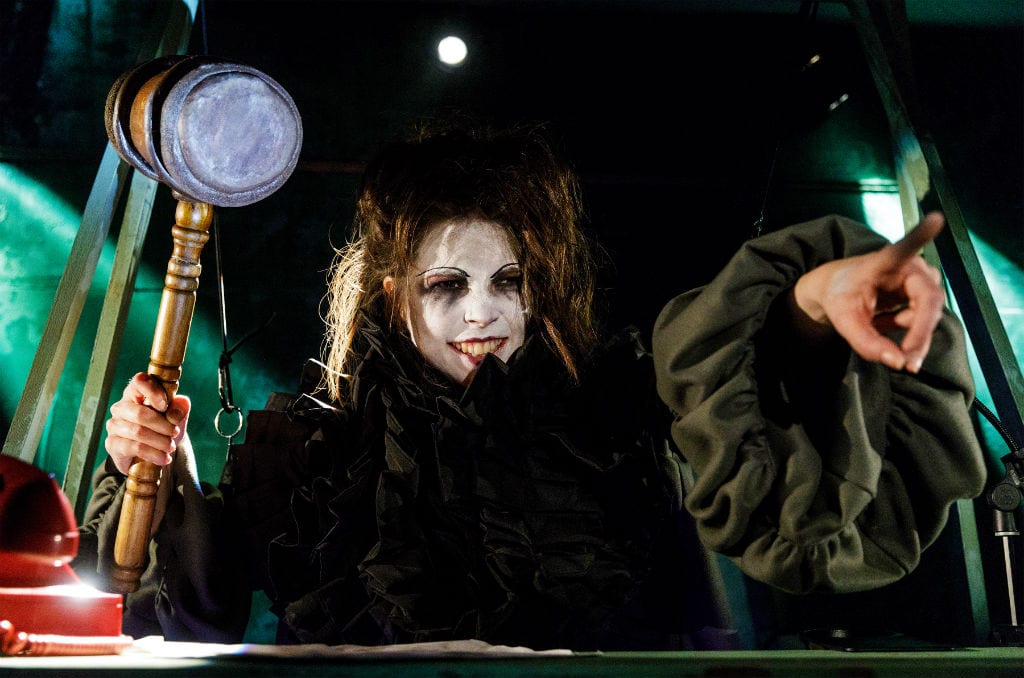Everyone is familiar with Pussy Riot and their Punk Prayer in Moscow’s Cathedral of Christ the Saviour from 2012, after which three members of the feminist post punk protest group were imprisoned in Russian labour camps. In 2017, a hundred years after the Russian Revolution and almost four years after her release, Pussy Riot member Nadezhda Tolokonnikova is in London and creates an immersive theatre experience about the absurdities of Russian politics. In collaboration with the Olivier Award nominated theatre company Les Enfants Terribles and Bird&Carrot, the immersive theatre performance will be at the Saatchi Gallery until December 24th. But how can the cruel conditions of imprisonment be reconstructed within a theatrical framework? Did the theatre company live up to their own claim of creating a situation in which audience members will understand how it feels to be a Russian prisoner?
In the beginning of the approximately 60-minute long theatrical experience, each audience member has to fill in a form with personal data and pick one positive statement to share in public. After this rather administrative beginning, a group of fourteen enters the theatrical space, which is organized in ten rooms – each of them representing one stage of imprisonment. The all-female cast guides the audience (now already wearing their balaclavas) through a labyrinth of traumatic memories beginning with Pussy Riot’s Punk Prayer from 2012 and ending with Maria Alyokhina and Nadezhda Tolokonnikova’s release in December 2013. The immersive theatre experience is a mixture of scenic elements, immersive tasks and documentary material, which portray actual conditions of imprisonment and torture. Within a circus-like setting full of colourful scenography and futuristic costumes, the audience is confronted with a Kafkaesque situation constantly shifting between illusion, irony and reality. This almost overly-aestheticized Disney-like approach goes hand in hand with various self-reflective moments in which the performers remind us of being part of a theatrical situation. As they say, they are “just doing their job”. And exactly this casual sentence, referring to “the banality of evil”, brings us back to the initial claim of reflecting and representing the real conditions of imprisonment in Russia.
So, what can we expect from “Inside Pussy Riot”? This immersive experience is posing a crucial question: how can violence be represented within an artistic framework? What is its right form and what are the limits? I read “Inside Pussy Riot” as a specific type of storytelling, as a narrative about the lack of human rights and the role of political activism in a constantly changing modern world of Trumpism and Brexit. The overwhelming support by Amnesty International, the Human Rights Foundation and Tolokonnikova and Alyokhina’s NGO’s Zona Prava and Mediazone, emphasizes the performance’s activist claim. Nevertheless, the immersive form unfortunately comes with the danger that the theatrical experience, as a safe event of enjoyment and entertainment, overshadows the actual activist claim of political awareness. Thus the strongest moments remain the hidden bits and pieces of documentary material interwoven into the colourful Disney Wonderland setting, which constantly reminds us that this surrealism is someone else’s realism.

